The Definitive Guide to Iron-Rich Foods for Health
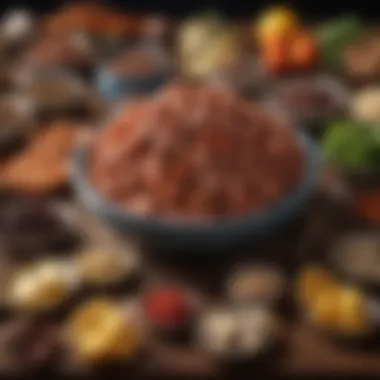
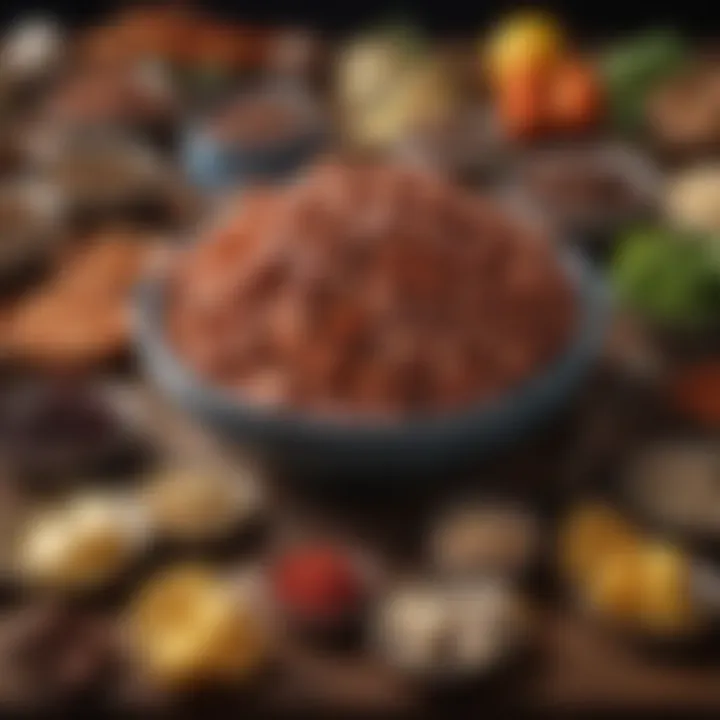
Intro
Iron is an essential mineral that plays a vital role in many bodily functions. Its importance cannot be overstated, as it is a key component of hemoglobin, the protein in red blood cells that carries oxygen throughout the body. A deficiency in iron can lead to various health issues, including fatigue, weakened immunity, and in severe cases, anemia. Understanding the sources of iron and their benefits is crucial for maintaining optimal health.
Dietary iron is found in two forms: heme and non-heme. Heme iron is derived from animal sources, while non-heme iron is found in plant-based foods. This article aims to provide a comprehensive examination of iron-rich foods, their types, and how they contribute to overall health. It will outline both heme and non-heme sources and provide practical advice for increasing iron intake through diet.
Key Benefits
Iron is not just a mineral; it's a staple for sustaining life and well-being. Understanding the key benefits of iron can highlight its necessity in our diets.
Physical Health Benefits
- Oxygen Transportation: Adequate iron levels support efficient oxygen delivery to tissues, promoting energy and endurance.
- Immune Function: Iron is essential for a robust immune system, aiding in the production of immune cells.
- Cognitive Function: Iron influences neurotransmitter function and plays a role in memory and concentration.
Mental Well-being Enhancements
Iron deficiency may impact mental health adversely. Sufficient iron can contribute to a stable mood, reduce fatigue, and improve focus. This enhancement in mental well-being can also play a role in balancing stress and anxiety levels.
"Adequate iron intake can improve both physical performance and mental clarity, leading to a more balanced and productive lifestyle."
Practical Tips
Incorporating iron-rich foods into your diet does not need to be complex. Here are some practical tips that can help in meal planning and preparation for maximum iron absorption.
Effective Meal Planning
- Include a variety of both heme and non-heme sources. Examples include red meat (like beef), poultry, fish, and legumes.
- Combine non-heme iron foods with vitamin C-rich foods to enhance absorption. For instance, pairing beans with bell peppers or lemons can be effective.
- Consider whole grains and seeds that also contribute to iron intake. Foods such as quinoa and pumpkin seeds can be delicious additions to your diet.
Quick and Efficient Workouts
Although this section primarily focuses on dietary choices, understanding that physical activity is related is essential. Engaging in moderate exercises, like brisk walking or cycling, can enhance blood circulation, thus increasing oxygen availability and using the iron effectively in your body.
By applying these practical tips, you can not only enrich your diet with iron but also support other related health factors.
Prelude to Iron in Nutrition
Iron is a crucial mineral that plays a fundamental role in various physiological functions within the human body. It is an essential component of hemoglobin, the protein responsible for transporting oxygen in the blood. Without adequate iron, the body may struggle to supply enough oxygen to tissues and organs, leading to fatigue and weakness.
In the context of nutrition, understanding what iron is and how it functions is vital. Different dietary choices can affect iron levels in the body. Iron is typically categorized into two forms: heme iron, which is primarily found in animal products, and non-heme iron, found in plant-based foods. The body absorbs these two types differently, influencing dietary recommendations.
Moreover, iron is not only necessary for oxygen transport but also for other cellular functions. It plays a role in ATP production, which is critical for energy metabolism. Additionally, iron contributes to the immune system, enabling the body to fight infections effectively.
"Iron is an essential mineral that supports oxygen transport, energy production, and immune function."
Understanding the sources of iron and how to incorporate them into daily meals is essential for nutritionists, wellness coaches, and health professionals. Through this article, we aim to explore various iron-rich foods and their importance in a balanced diet. This awareness allows practitioners to guide their clients on optimizing iron intake effectively.
Notably, without awareness of dietary practices, individuals may inadvertently consume low iron levels, leading to potential health risks. Therefore, knowledge about iron in nutrition is not simply academic; it has practical applications in dietary planning and health management.
With an emphasis on iron-rich foods, readers of this guide will gain insights into enhancing their dietary choices, promoting better health outcomes.
The Importance of Iron
Iron is a vital nutrient that supports numerous bodily functions, contributing significantly to overall health. It plays a central role in the body’s ability to produce hemoglobin—a protein found in red blood cells responsible for transporting oxygen from the lungs to tissues. Adequate iron levels enhance energy production and bolster immune function, making it essential for individuals of all ages.
Moreover, iron is particularly important during key life stages, such as childhood, pregnancy, and adolescence, where the demand for oxygen transport and hormonal balance is heightened. Deficiencies in iron can lead to significant health consequences, underlining its importance in daily nutrition.
"Iron is crucial for life. Its impacts on physical and cognitive performance cannot be overstated."
Roles of Iron in the Body
Iron operates primarily in two forms: heme iron and non-heme iron. Each type offers distinct roles within the body, influencing various biochemical processes.
- Transport of Oxygen: As noted, iron is a core component of hemoglobin. This function is paramount for delivering necessary oxygen to organs and muscles, which is vital for energy metabolism.
- Energy Production: Iron is a cofactor in many enzymes that facilitate metabolic processes, crucial for energy production at the cellular level.
- Immune Response: It helps in the proliferation and maturation of immune cells, aiding the body in fighting off infections.
- Cognitive Function: Iron is also involved in neurotransmitter synthesis, impacting mood and cognitive function, which illustrates its broader significance beyond physical health.
In summary, iron’s role in oxygen transport, energy production, immune function, and cognitive performance highlights its multifaceted importance in maintaining optimal health.
Consequences of Iron Deficiency
Iron deficiency can lead to a range of health issues, often manifesting as anemia. Anemia results when there is insufficient hemoglobin to carry oxygen, leading to symptoms such as fatigue, weakness, and pallor. The following consequences are commonly observed with iron deficiency:
- Fatigue and Weakness: Low iron levels directly result in decreased oxygenation of tissues, triggering fatigue that affects daily activities.
- Impaired Cognitive Function: Individuals with insufficient iron may experience difficulties in concentration, memory, and overall cognitive performance.
- Decreased Immune Function: A lack of iron can weaken the immune system, increasing susceptibility to infections.
- Complications in Pregnancy: Pregnant individuals with iron deficiency are at risk of delivering preterm or low-birth-weight babies.
Overall, the consequences highlight the necessity of maintaining healthy iron levels through a balanced diet and when needed, supplementation. Awareness of iron’s importance can lead to better health outcomes through informed dietary choices.
Types of Iron
Understanding the types of iron is crucial in any discussion about dietary iron. Iron is categorized primarily into two types: heme and non-heme. Each type plays a unique role in nutrition and has different implications for absorption in the body.
Both these forms of iron are vital to human health, yet they behave distinctly in terms of dietary sources and how the body utilizes them. Iron deficiency can complicate health and impact various bodily functions, making awareness of these types important for wellness professionals and their clients.
Heme Iron
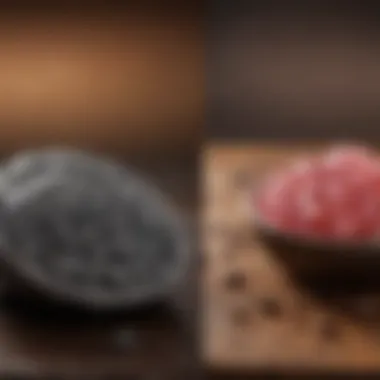
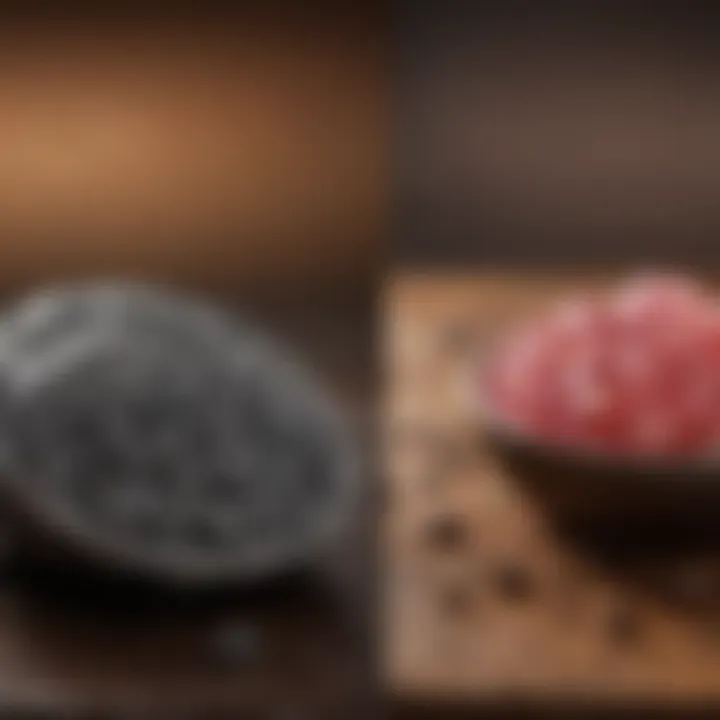
Heme iron is derived from hemoglobin in animal products. This type is found in red meat, poultry, and fish. One key advantage of heme iron lies in its superior absorption rate compared to non-heme iron. This is particularly relevant for individuals at risk for deficiency, such as pregnant women or those with dietary restrictions.
It may absorb at a rate of about 15% to 35%, while non-heme iron’s absorption ranges from only 2% to 20%. The body has a mechanism that optimally absorbs this type when it is sourced from animal proteins.
Sources of Heme Iron:
- Beef
- Pork
- Lamb
- Chicken
- Turkey
- Fish
Including these foods in meals can effectively increase iron intake. Notably, heme iron contributes to the body's reservoirs of iron more efficiently. A dish combining red meat with leafy greens can enhance not only flavor but also iron levels in the body.
Non-Heme Iron
Non-heme iron, on the other hand, is primarily found in plant-based foods. It includes legumes, grains, nuts, seeds, and leafy vegetables. While it is plentiful in many diets, the absorption efficiency is lower. The body's ability to absorb non-heme iron is influenced by several factors such as the presence of other nutrients.
Enhancers and Inhibitors of Non-Heme Iron Absorption:
- Vitamin C enhances absorption, so consuming orange slices or bell peppers with beans is beneficial.
- Calcium and polyphenols, present in tea or coffee, may inhibit absorption, highlighting the importance of food combination strategies.
Sources of Non-Heme Iron:
- Lentils
- Chickpeas
- Quinoa
- Spinach
- Pumpkin seeds
Incorporating these foods into a diet can support iron needs, especially for those following vegetarian or vegan lifestyles. It is crucial to understand and educate clients about the difference in iron types. This knowledge can empower them to make informed dietary choices that support their health goals.
"Recognizing the distinctions between heme and non-heme iron will help individuals tailor their diets for improved iron status."
Animal Sources of Iron
Animal sources of iron are vital in understanding how to effectively enhance iron intake in the diet. These foods typically provide heme iron, which is more readily absorbed by the body compared to non-heme iron found in plant sources. Iron plays a crucial role in various bodily functions, and incorporating animal-based foods can be a key aspect in achieving optimal health. Adequate intake of these iron-rich foods can support overall vitality, energy levels, and immune function.
Red Meat
Red meat is often highlighted for its high iron content. Sources like beef, lamb, and pork are rich in heme iron, which is sourced from animal tissues. A typical serving of beef can provide nearly 3 mg of iron, depending on the cut, making it a prime choice for those looking to boost their iron levels. Additionally, red meat is not just rich in iron; it also contributes other essential nutrients such as protein, zinc, and B vitamins that support metabolic processes.
However, it is important to consume red meat in moderation. Excessive intake is associated with health risks, including heart disease and certain types of cancer. Opting for lean cuts and balancing red meat consumption with a variety of other iron sources can help mitigate these risks.
Poultry
Poultry, including chicken and turkey, represents another significant source of heme iron in diets worldwide. Though chicken contains slightly less iron than red meat, it still offers a substantial amount. A serving of dark meat chicken typically contains around 2 mg of iron, making it a suitable option for increasing iron intake. Poultry is also lower in fat compared to red meat, which adds to its appeal in many dietary plans.
In terms of versatility, poultry can be prepared in numerous ways, allowing for easy incorporation into various cuisines. Grilling, roasting, and stewing are just a few methods that can retain its nutritional value while providing flavorful meals.
Fish and Seafood
Fish and seafood also provide significant amounts of iron, specifically heme iron, which makes it another excellent choice. Varieties like tuna, salmon, and mackerel are particularly rich. For example, a serving of cooked tuna can contain around 1.3 mg of iron. Seafood offers an array of other health benefits as well; it is high in omega-3 fatty acids, which promote heart health and reduce inflammation in the body.
It is worth noting that certain shellfish, like oysters and clams, can be exceptionally high in iron, with oysters containing up to 8 mg per serving. Incorporating a range of fish and seafood into the diet not only boosts iron levels but also provides various essential nutrients that support overall well-being.
"Including animal sources of iron in your diet can be an effective way to improve iron levels in the body, leading to better health outcomes."
Plant-Based Sources of Iron
Plant-based sources of iron are crucial for those who follow vegetarian or vegan diets. These foods present an alternative to the heme iron found in animal products. While they may not contain iron in the same readily absorbable form, they still contribute significantly to overall iron intake when consumed regularly. Focusing on plant-based iron sources can also offer various health benefits, such as increased intake of fiber, vitamins, and minerals.
Iron is essential for the production of hemoglobin, the protein in red blood cells that carries oxygen throughout the body. Individuals relying solely on plant-based diets must ensure they include adequate iron sources to avoid deficiency. To optimize iron absorption, it is also important to understand how these sources interact with other nutrients in the diet.
Legumes
Legumes, such as lentils, chickpeas, and black beans, are excellent sources of non-heme iron. They not only provide a significant amount of iron but also offer protein and fiber, promoting satiety and digestive health. A cup of cooked lentils can contain around 6.6 mg of iron, which demonstrates their potential for meeting daily requirements. Cooking legumes properly further enhances their digestibility and nutritional profile. Including a variety of legumes in meals can enhance both iron and nutrient diversity.
Nuts and Seeds
Nuts and seeds, including almonds, pumpkin seeds, and sesame seeds, also serve as valuable sources of iron. These foods are nutrient-dense, providing healthy fats, protein, and various vitamins. Pumpkin seeds stand out, offering about 7.5 mg of iron per 100 grams. Regular consumption of nuts and seeds can contribute to meeting iron needs while also promoting heart health. To maximize benefits, mix them into cereals, salads, or snack on them directly.
Green Leafy Vegetables
Green leafy vegetables like spinach, kale, and Swiss chard are renowned for their nutrient content, including iron. Spinach is often highlighted for its high iron concentration, with around 3.6 mg per cooked cup. These vegetables are not just good iron sources; they also contain vitamin C, which aids iron absorption. Eating green leafy vegetables in various dishes increases intake of iron while supporting a well-rounded diet.
Whole Grains
Whole grains such as quinoa, oats, and brown rice are another key category of iron-rich foods. Quinoa, often referred to as a super grain, includes around 2.8 mg of iron per cooked cup. Whole grains are beneficial because they provide complex carbohydrates and additional nutrients like B vitamins. They can serve as a filling and nutritious base for a variety of meals, enabling diverse culinary applications that enhance iron intake.
It's essential to consume a variety of plant-based iron sources to ensure an adequate intake. Combining them with vitamin C-rich foods can amplify absorption during meals.
Fortified Foods as Iron Sources
Fortified foods play a critical role in addressing iron deficiency, particularly in populations at risk. They are foods that have essential nutrients added to them, helping to bridge dietary gaps and enhance nutritional quality. The relevance of iron fortification is particularly pronounced given that many people do not meet their iron intake needs through diet alone. Iron deficiency can lead to numerous health issues, including anemia, fatigue, and weakened immunity. Therefore, the consideration of fortified foods is a practical solution to improve overall health and ensure adequate iron levels.
"Iron fortification is a strategic approach to ensure that vulnerable populations receive adequate dietary iron, thus preventing deficiency-related health problems."
Breakfast Cereals
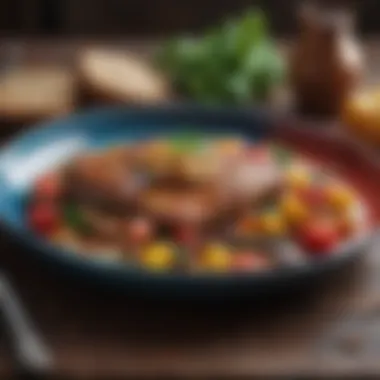
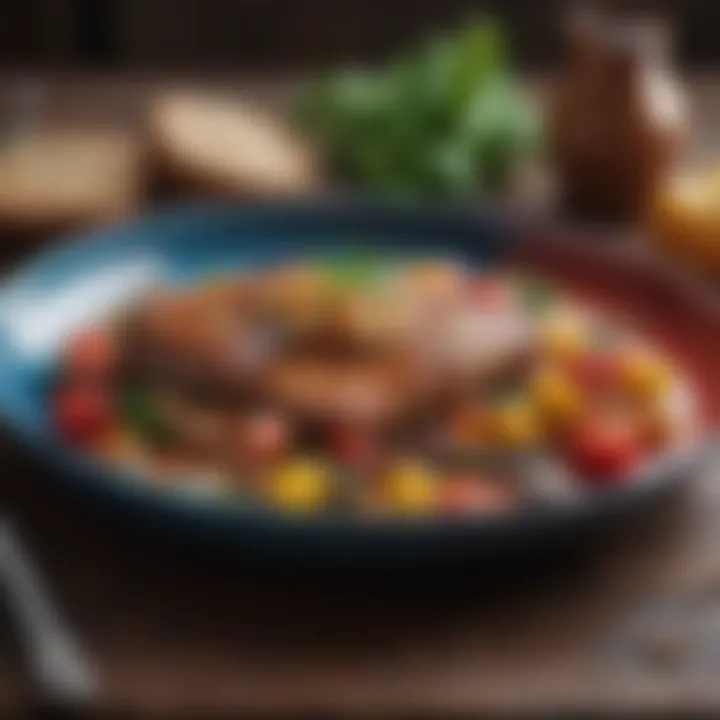
Breakfast cereals are one of the most commonly fortified foods. Many brands add both heme and non-heme iron to their products. The process involves the inclusion of various iron compounds, which makes cereals a valuable source of iron, especially for individuals who may struggle to include sufficient natural sources of iron in their diets.
Most breakfast cereals marketed for adults and children are fortified with iron. This is particularly important for young children, teenagers, and pregnant women, who have higher iron needs. A single serving can often provide a significant portion of the daily requirement.
When selecting breakfast cereals, it is important to read labels carefully. Look for those that specify the amount of iron included. Additionally, consuming breakfast cereals with a source of vitamin C, such as orange juice or fresh fruit, can further boost iron absorption in the body.
Bread and Pastas
Bread and pastas are other notable examples of fortified foods. In many countries, flour used in making bread and pasta is enriched with iron and often other nutrients like folic acid. The process of fortifying flour helps improve the iron intake of a population, especially in regions where meat consumption is low.
Moreover, whole grain options may also provide naturally occurring iron, enhancing the overall iron content of these staple foods. While not all breads and pastas are fortified, many brands choose to take this step to promote better health among consumers. It's advisable to check product labels to verify iron content.
In summary, the incorporation of fortified foods, including breakfast cereals and enriched bread and pastas, represents a strategic method to improve iron intake on a broader scale. These foods can play a vital role in dietary strategies to prevent iron deficiency and its associated health risks.
Understanding Iron Absorption
Iron is a crucial nutrient that the body needs for various functions, including the production of red blood cells and the transportation of oxygen. However, not all iron consumed through food is absorbed equally. Understanding how iron absorption works is vital to maximizing the benefits of iron-rich foods. This section examines the factors that influence iron absorption, the role of Vitamin C, and practical considerations to ensure optimal iron intake.
Factors Influencing Absorption
Iron absorption is affected by several factors. These include:
- Type of Iron: Heme iron, found in animal products, is absorbed more efficiently than non-heme iron, which is present in plant-based foods.
- Food Matrix: The composition of the food matrix can affect how well iron is absorbed. For example, a diet high in phytates, commonly found in grains and legumes, may inhibit absorption.
- Competing Nutrients: Certain nutrients can hinder iron absorption. Calcium, for instance, can compete with iron for absorption in the intestine. If you consume a calcium-rich food, it may impact how much iron your body takes up from that meal.
- Digestive Health: Conditions that affect the gastrointestinal tract, like celiac disease or inflammatory bowel disease, can reduce iron absorption. A healthy gut is essential for optimal nutrient uptake.
To summarize, several elements affect iron absorption. Understanding these factors can help individuals make informed choices at meal times, leading to better overall iron levels in the body.
Role of Vitamin
Vitamin C plays an essential role in enhancing iron absorption, particularly non-heme iron. When consumed alongside iron-rich foods, Vitamin C can convert non-heme iron into a more absorbable form, which aids in increasing its bioavailability.
Here are some key points regarding the relationship between Vitamin C and iron absorption:
- Enhancement of Non-Heme Absorption: Vitamin C acts as a reducing agent, which helps to keep iron in a soluble form. This conversion is especially important for individuals who rely on plant-based sources of iron.
- Sources of Vitamin C: Citrus fruits (like oranges and lemons), strawberries, kiwi, bell peppers, and broccoli are excellent sources of Vitamin C. Including these foods in meals can significantly enhance iron intake.
- Practical Tips: Consuming a glass of orange juice with a meal or adding lemon juice to salad dressings containing spinach or beans can maximize iron absorption.
Moreover, food synergy is crucial. Combining iron-rich foods with Vitamin C-rich foods can lead to better iron levels and overall health. Below is a summary of food combinations:
- Spinach and Citrus Dressing
- Beans and Bell Pepper Stir-fry
- Oatmeal with Berries
Combining Foods for Enhanced Iron Absorption
Combining specific foods can significantly enhance the absorption of iron, which is crucial for maintaining optimal health. While it is essential to consume iron-rich foods, understanding how to pair them with others is equally important. Proper combinations can lead to improved bioavailability of iron, thereby optimizing the benefits derived from dietary sources.
Importance of Food Pairing
Iron absorption is not just dependent on the amount of iron present in the food. Other nutrients can either promote or inhibit its absorption. For instance, vitamin C is a well-known enhancer of non-heme iron absorption; pairing foods rich in non-heme iron, like legumes, with vitamin C sources (such as citrus fruits or bell peppers) can increase iron uptake in the body.
Conversely, certain foods contain compounds that hinder iron absorption. Calcium-rich foods (like dairy products) and certain types of tea and coffee contain polyphenols that can bind to iron and reduce its bioavailability. Therefore, it is advisable to consume these at different times rather than in the same meal when aiming for optimum iron intake.
Practical Pairings for Improved Absorption
When creating meals, consider the following combinations to enhance iron absorption:
- Legumes + Vitamin C Sources: Pair lentil salad with a dressing made from lemon juice for a nutritious boost.
- Whole Grains + Nuts: Mix quinoa with chopped nuts like almonds or cashews for a hearty meal.
- Spinach + Citrus Fruits: For a refreshing side dish, consider spinach salad topped with orange segments.
Considerations for Meal Planning
Incorporating these combinations into your diet requires thoughtful meal planning. Keep in mind not only the nutritional value of each food but also their compatibility in terms of maximizing iron absorption.
"Pairing iron-rich foods with enhancers can lead to significantly better absorption rates, positively impacting overall health outcomes."
It is also beneficial to educate others about these simple yet effective strategies. Educators and wellness coaches can implement these pairings in their dietary recommendations. Furthermore, individuals should focus on mealtime practices that maximize nutritional benefits without over-complicating meal preparation.
Ending
By being mindful of food combinations, one can optimize iron intake significantly. This makes it essential for health professionals to integrate these insights into dietary guidelines and educational materials. Such considerations not only enhance iron levels but also contribute to broader nutritional knowledge and health awareness for their clients.
Dietary Recommendations for Iron Intake
Iron is an essential mineral that plays a pivotal role in the maintenance of overall health. Understanding the dietary recommendations for iron intake is vital for preventing deficiencies and supporting bodily functions. Iron is crucial for oxygen transport, energy production, and overall cellular function. The importance of knowing how much iron one needs and how to effectively obtain it from diet cannot be overstated. Particularly for populations at higher risk of deficiency such as pregnant individuals, growing children, and those with certain health conditions, adhering to dietary recommendations is of utmost importance.
Daily Iron Requirements
Daily iron requirements vary based on age, sex, and physiological conditions. For most adult men, the recommended daily allowance (RDA) is approximately 8 mg. However, for adult women, especially those of childbearing age, the RDA increases to around 18 mg due to menstruation and potential pregnancy needs. Postmenopausal women can revert to the male requirement of 8 mg.
Certain life stages also require modifications in iron intake.
- Pregnant women: The requirement increases significantly to about 27 mg per day to support fetal growth and placental development.
- Infants and children: Needs fluctuate from 11 mg for infants aged 7-12 months to 15 mg for toddlers aged 1-3 years.
This variability in daily requirements emphasizes the need for a tailored approach regarding iron intake. Understanding personal needs based on these categories helps individuals to make informed dietary choices.
Recommended Food Portions


When it comes to meeting daily iron needs through food, recommended portions should include a balance of heme and non-heme iron sources. Recognizing the differences in absorption between the two types is also essential. To ensure adequate intake, one can follow these guidelines:
- Red Meat: 3 ounces (85 grams) can provide about 2.1 mg of heme iron, which is more readily absorbed by the body.
- Poultry: 3 ounces of chicken or turkey offers about 1.0 mg of iron.
- Fish: A serving of 3 ounces of salmon contains about 0.5 mg of iron.
- Legumes: One cup of cooked lentils provides around 6.6 mg of non-heme iron.
- Nuts and Seeds: A handful (about 1 ounce) of pumpkin seeds can yield around 2.5 mg of iron.
- Whole Grains: One cup of fortified oatmeal provides about 11 mg of iron, which contributes significantly toward daily needs.
Consuming a mix of these foods and pairing them with vitamin C-rich fruits can enhance iron absorption significantly, further promoting overall health.
When evaluating recommended food portions, it is also critical to consider personal dietary restrictions. Adjustments may be necessary based on vegetarian or vegan preferences, as these diets rely primarily on non-heme iron sources. By following these recommendations, individuals can better manage iron levels in their body and prioritize their health.
Iron-Rich Meal Ideas
Creating meals that are rich in iron should be a priority for anyone looking to maintain optimal health. Iron plays a crucial role in various bodily functions. It assists in transporting oxygen, supports immune function, and is necessary for energy production. This section will explore practical meal ideas that emphasize the inclusion of iron-rich foods.
Importance of Meal Planning for Iron Intake
Iron deficiency can lead to serious health issues, including anemia. Therefore, incorporating iron-rich foods into daily meals is essential. By thoughtfully planning meals, individuals can ensure they meet the recommended daily intake of iron. This approach not only promotes better health but also enhances overall well-being. Meal planning can aid in maintaining a balanced diet that includes heme and non-heme iron sources.
Meal Ideas
Creating varied and nutritious meals can help in maximizing iron intake. Below are some meal ideas containing high levels of iron:
- Breakfast:
- Lunch:
- Dinner:
- Snacks:
- Oatmeal cooked with fortified cereals or almond milk topped with pumpkin seeds and berries.
- Scrambled eggs with spinach and whole grain toast.
- Quinoa salad with chickpeas, spinach, and a lemon-tahini dressing.
- Grilled chicken salad with mixed greens, nuts, and a balsamic vinaigrette.
- Beef stir-fry with broccoli, bell peppers, and brown rice.
- Lentil soup with carrots, celery, and whole grain bread.
- Hummus with red bell pepper strips or whole grain crackers.
- Trail mix made with almonds, dried apricots, and dark chocolate.
Considerations for Meal Preparation
When preparing iron-rich meals, consider the timing of meal consumption with regards to certain beverages. For instance, tea and coffee can inhibit iron absorption when consumed during meals. It is wise to consume these beverages between meals instead.
"Combining foods is key to enhancing iron absorption. For instance, pair vitamin C-rich foods with iron-rich meals to boost uptake."
Key Takeaways
Incorporating iron-rich meals requires some planning and consideration of food combinations. Focusing on diverse food sources enhances the nutrition profile. This is not merely about consuming more iron but also about ensuring the body effectively absorbs it. Regularly integrating suggestions above can support health and vitality, safeguarding against deficiency.
Supplements and Iron Fortification
Iron is a crucial mineral that is essential for many bodily functions. However, there are instances when dietary sources of iron may not suffice to meet an individual's needs. In such cases, iron supplements and fortified foods become relevant. These options can play an important role in preventing iron deficiency and supporting overall health. Understanding when and how to use these resources can significantly improve iron intake and address potential deficiencies.
When considering iron supplements, it is essential to recognize the different forms available, such as ferrous sulfate, ferrous gluconate, and ferrous fumarate. Each type varies in absorption and side effects. For instance, ferrous sulfate is commonly recommended due to its higher elemental iron content. Moreover, many iron-fortified products also exist in the market, including cereals and bread, which can aid in dietary consumption of this vital mineral.
When to Consider Supplements
Several scenarios may warrant the use of iron supplements. Those at higher risk for deficiency include:
- Pregnant or postpartum women
- Individuals with heavy menstrual bleeding
- Vegetarians or vegans who may lack sufficient heme iron
- People with certain gastrointestinal conditions that inhibit iron absorption
- Athletes, due to higher physical demands
In these cases, consulting with a healthcare professional is advisable before initiating any supplementation. They can recommend appropriate dosages and forms of iron supplements based on individual health profiles.
Potential Risks of Iron Overload
While iron supplementation can be beneficial, it is crucial to be cautious. Excessive intake of iron can lead to toxicity, known as iron overload. This risk is particularly significant for those who do not require additional iron or have conditions that increase the absorption of iron, such as hemochromatosis. Symptoms of overload may include fatigue, joint pain, and abdominal pain.
Therefore, it is not wise to self-prescribe iron supplements. Regular monitoring of iron levels through blood tests is essential, particularly for individuals who take supplements on a long-term basis. It helps to ensure they remain within a healthy range while preventing complications associated with excess iron intake.
Key Point: Always consult a healthcare provider before starting iron supplements, especially if you have existing health conditions or if you are pregnant. This ensures a balanced approach to iron intake, preventing both deficiency and overload.
Cultural Considerations in Iron Intake
Understanding how culture influences iron intake is crucial for developing effective dietary strategies. Since iron is vital for several body functions, a comprehensive approach that considers cultural practices can significantly help in addressing iron deficiency issues. Different cultures have unique food traditions and preferences that shape their dietary intake of iron. By exploring these dietary practices, we can appreciate how cultural factors impact nutritional health and can guide food choices to enhance iron consumption.
The significance of cultural considerations in iron intake includes not only the types of foods consumed but also the preparation methods that can affect iron bioavailability. Some practices may enhance iron absorption, while others could hinder it. For instance, certain cultures may have traditional dishes rich in legumes and leafy greens, which are excellent sources of non-heme iron. However, they may also consume these foods with ingredients high in phytates, which can inhibit iron absorption. Thus, being aware of these intricacies allows health professionals and nutritionists to provide tailored advice relevant to specific cultural contexts.
"Cultural food practices and beliefs can significantly affect nutritional patterns and iron intake."
It is also essential to acknowledge that cultural identity is often linked to food. Not only do people eat for sustenance, but food also serves as a medium for social connection and cultural expression. Encouraging iron-rich foods that align with cultural preferences can foster acceptance among communities. This approach empowers individuals to make healthier choices while maintaining their cultural identities. This balance between promoting health and respecting cultural values is vital for success in any dietary intervention or educational campaign.
Dietary Practices Around the World
Dietary practices around the globe vary widely, and with them, the sources and amounts of iron consumed.
- Africa: Many African cultures rely on traditional grains and legumes. Foods like sorghum and beans provide essential nutrients. However, iron intake can be low due to high levels of phytates in these foods.
- Asia: In countries like India, iron-rich foods include lentils and chickpeas. The consumption of vitamin C-rich foods, such as citrus fruits, often accompanies meals, enhancing iron absorption.
- Europe: Red meats are staples in various European diets, providing high amounts of heme iron. However, there is also growing interest in plant-based diets, which may impact overall iron intake.
- Americas: Traditional American diets include lean meats and seafood as primary iron sources. However, in some communities, processed foods may contribute to lower overall iron consumption.
By recognizing these dietary differences and their implications, health professionals can better address iron deficiency across populations. Understanding dietary practices is an effective way of ensuring strategies are culturally sensitive and more likely to succeed.
Ending
Iron plays a crucial role in maintaining the overall health and vitality of the human body. This article has explored the various sources of iron, including both heme and non-heme categories, and highlighted the significance of each in promoting wellness. The examination of animal sources such as red meat, poultry, and fish underscores the ease with which individuals can obtain iron from these options. Additionally, the section on plant-based sources has revealed that legumes, nuts, seeds, and green leafy vegetables are also vital components of a diet rich in iron.
The discussion on fortified foods has broadened the scope, demonstrating that many everyday products can help meet iron requirements. More importantly, understanding the factors that influence iron absorption allows readers to optimize their dietary choices. The practical tips for combining foods not only enhance the absorption but also make meal planning more effective.
Nutritional guidelines regarding daily iron requirements provide a framework for individuals to tailor their diets according to their specific needs. For those who consider supplements, it is essential to be aware of the potential risks of iron overload and ensure that any supplementation is appropriate for their circumstances.















